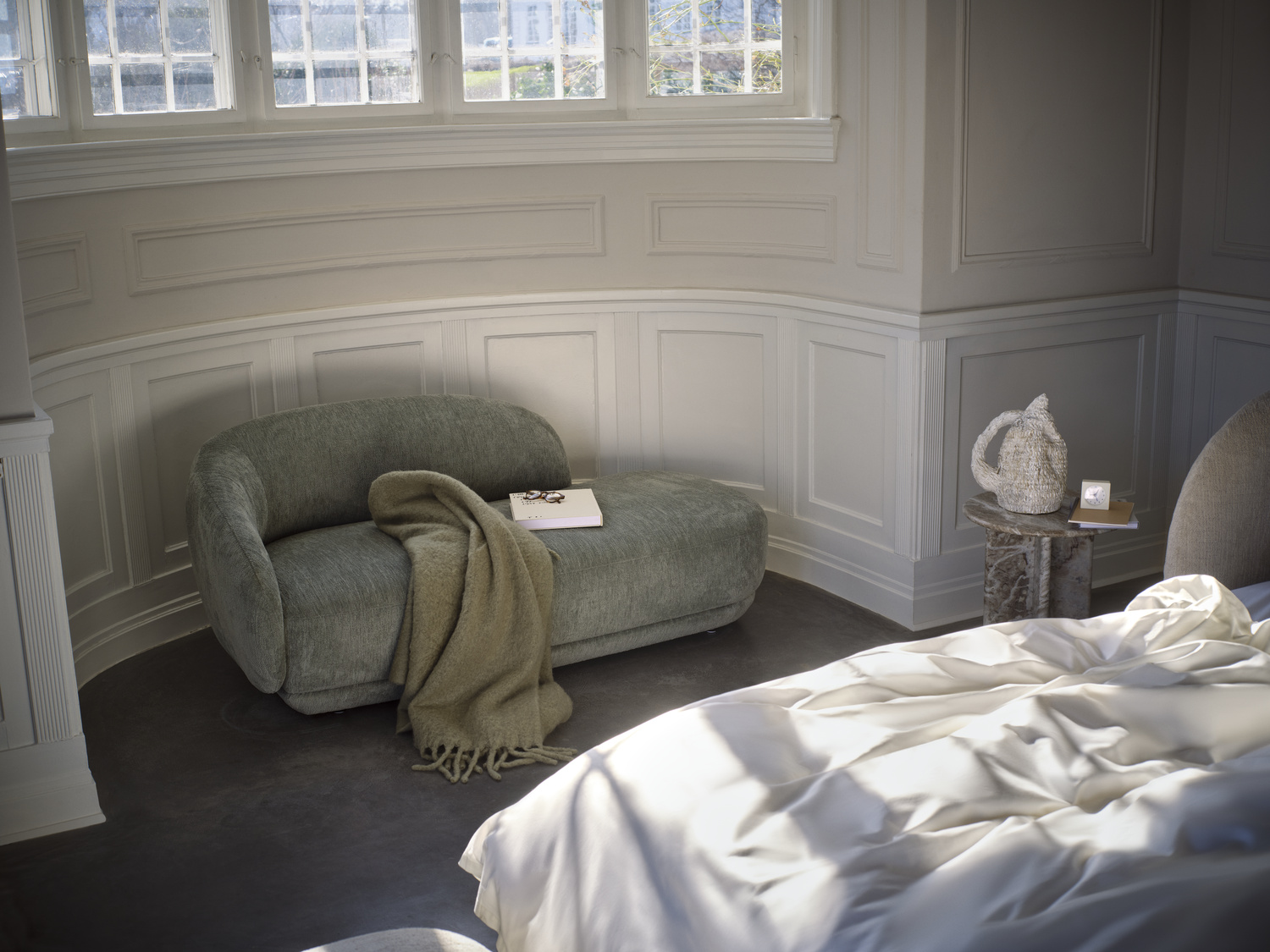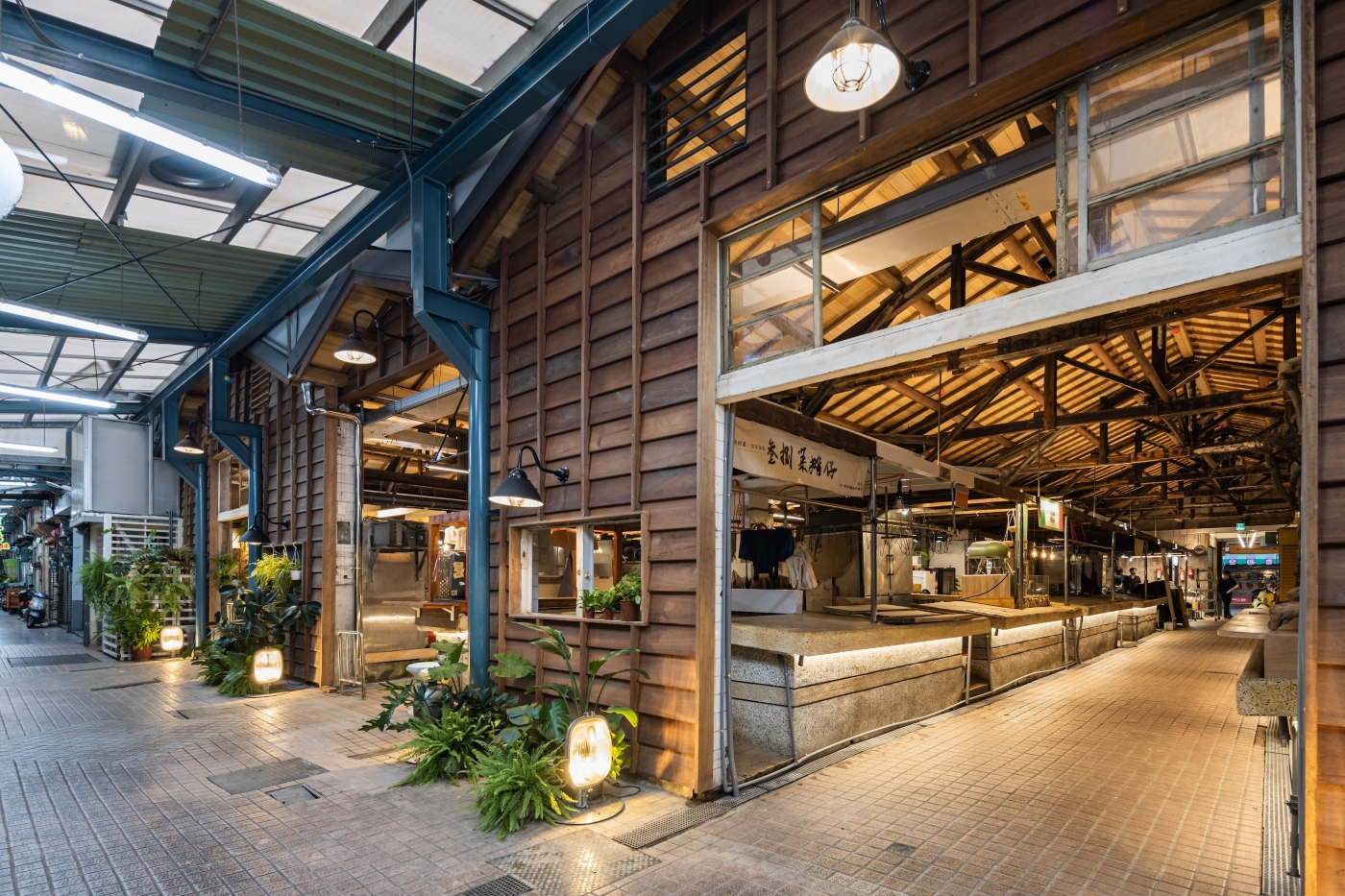Header: Ton Hurks
Center Parcs, renowned for its family-friendly holiday parks in the heart of nature, aimed to enhance its offerings for a broader audience. In response, Concrete developed a new and innovative generation of prototype cottages, rethinking the classic Center Parcs bungalow.
A prototype has been constructed at Parc Bispinger Heide in Germany, now available for rental by guests. Drawing inspiration from the original design by Dutch architects Van den Broek and Bakema, Concrete crafted a contemporary experience, centered around themes of togetherness and nature. Concrete brings its expertise in modular construction to the Center Parcs project, devising a cottage that is sustainable, easy to build, and imposes very little disruption to its environment.

At the core of the new design is the concept of finding oneself in nature. The idea was to create spaces where guests could disconnect from the hustle of daily life and reconnect with themselves. The new cottage achieves this by seamlessly blending indoor and outdoor spaces. A floor-to-ceiling glass facade offers uninterrupted views of surrounding nature, making the outdoors feel like an extension of the living room.
The cottage is comprised of two prefabricated modules, containing all essentials – the kitchen, multiple bedrooms, and bathrooms. The modules are connected by the living room, which allows nature to pour in. The living room is not only the connecting space but also the heart of the cottage. It is bathed in natural light through its expansive windows, which allow views to the front and to the back. Each side of the house offers a different perspective on the beautiful forest outside. In front of the living room, an outdoor private terrace offers guests an intimate space to enjoy the outdoors. Beyond its inspiring views, the cottage offers a truly immersive experience in nature.
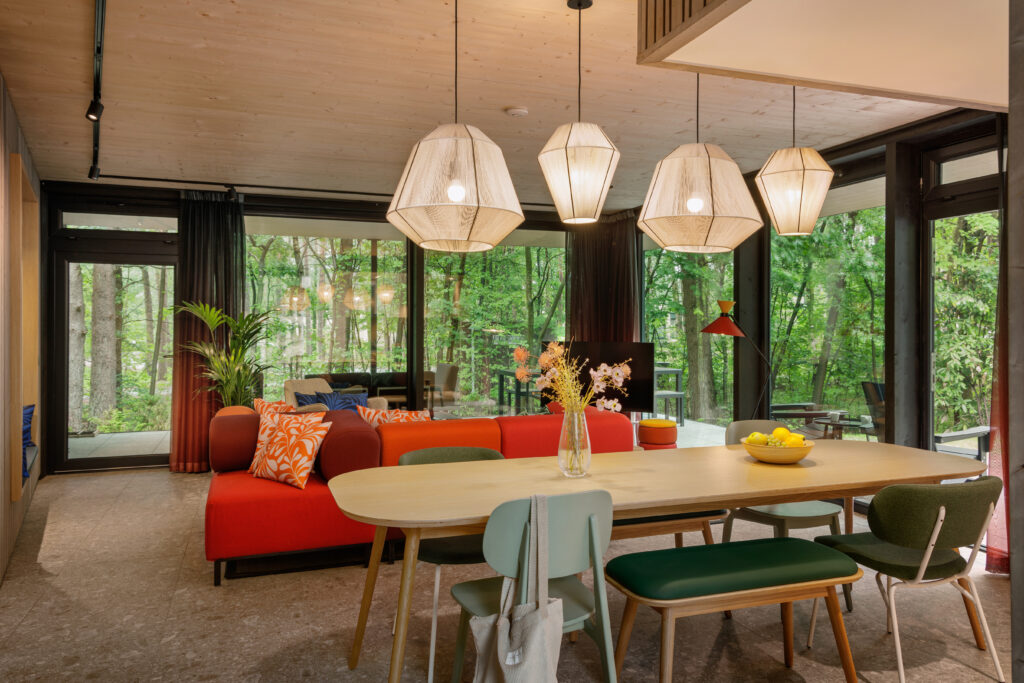
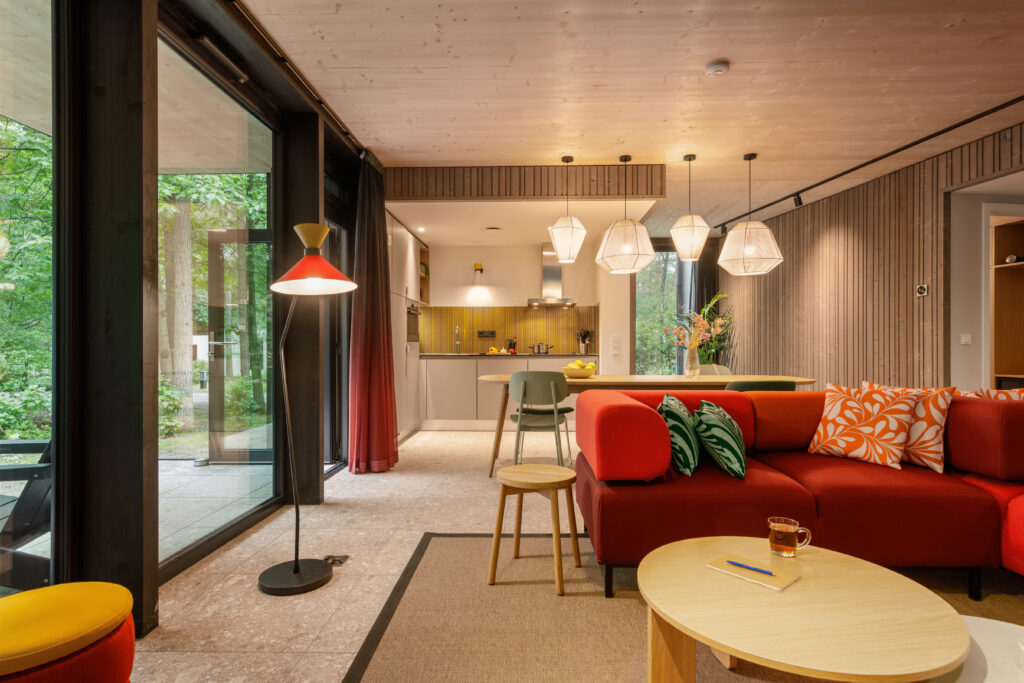
Promoting togetherness, the living room is designed around a central oversized dining table, perfect for a board game after dinner. The modular corner couch, inspired by the iconic 1970s Center Parcs style, has been reimagined into a versatile sofa that guests can configure into personalized seating arrangements, accommodating all the needs of a modern family.
The project is designed around the principle of modular pre-fabrication, with a hybrid of 2D elements and 3D modules created off-site and quickly assembled in a scenic natural setting. The cottage is easy to install on-site, allowing it to be ready for guests in less than 2 weeks.
The architecture of the cottage is simple and unobtrusive, maintaining the tradition of modernist architecture of Van den Broek and Bakema, and ensuring that the outdoors remain a focal point. The influence of the original architects is also evident in the thoughtful clustering of cottages. Adopting Bakema’s favored technique, the cottages are arranged in a staggered layout, ensuring privacy by shielding views between neighbouring structures. The layout also prevents terraces from intruding upon each other, preserving the overall sense of serenity.
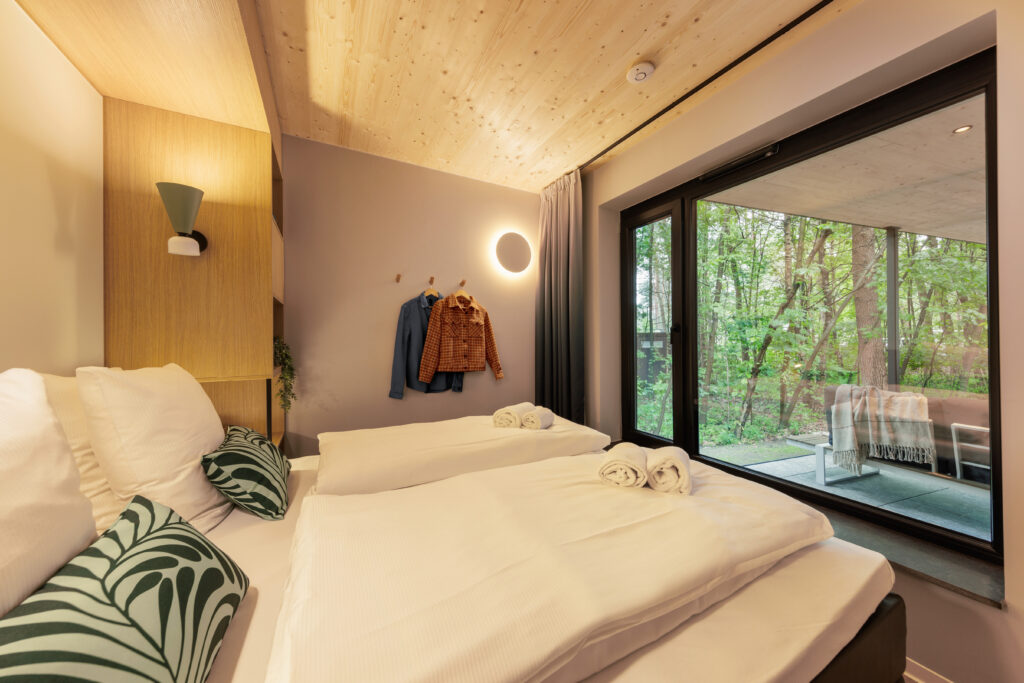

The cottage has been carefully designed with a strong emphasis on sustainability and minimal energy consumption. First, the cottage features high-quality insulation, which minimizes heat loss and maximizes energy efficiency. Moreover, only materials of organic origin are used, not only reducing the ecological footprint, but also contributing to a healthier indoor environment. The consistent use of wood on both the exterior and interior blurs the distinction between inside and outside, strengthening the connection to nature. The stone flooring, cross-laminated timber (CLT) ceiling, and spruce wood wall cladding establish a timeless neutral colour palette. The use of durable, high-quality materials minimizes the need for frequent replacement and maintenance.
In terms of energy supply, the cottage operates entirely on electricity, utilizing photovoltaic cells on the roof, and a heat pump for heating and cooling. Combined, all of these features contribute to an eco-friendly and sustainable stay, with the preservation of the environment at its core.
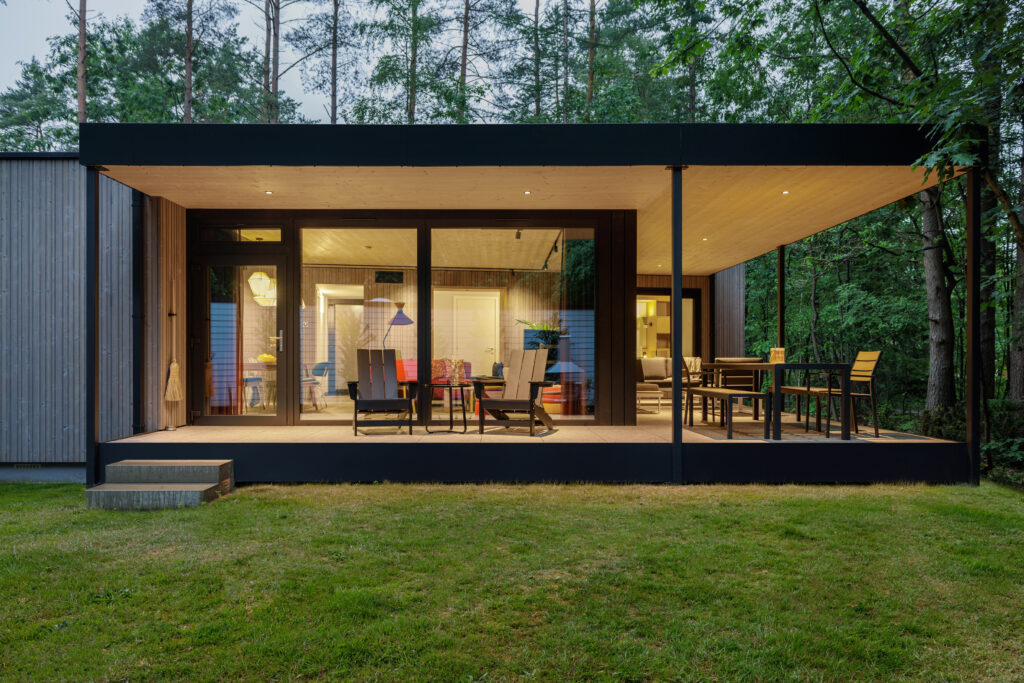
Source: v2com newswire




